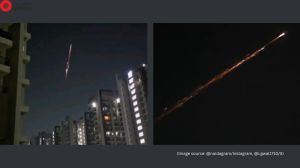The Forbidden Valley
Discovering the simple pleasures of life in Himachal pradeshs Parvati Valley.
The bus belched black smoke and stuttered along the steep hairpin ascent carved on the craggy mountainside. We were veering deeper into the womb of the majestic Himalayas. The steep fall of about thousand metres on our left,dissipating into the mad rapids of river Parvati,was good enough to cause vertigo in weaker hearts. We were headed to Kasol and I was glad that Id only had tea at Bhuntar,a quaint town in the Kullu district,from where we had boarded the bus.
My knowledge of hill stations has mostly been confined to more frequented destinations,so when the suggestion to backpack to Parvati Valley in Himachal Pradesh came up one evening over dinner,I wasnt quite sure of what to expect. A fortnight later,when the bus wound up the mountains,opening up breathtaking vistas,I was glad I had ventured beyond the known.
Parvati Valley,named after goddess Parvati,is often referred to as the forbidden valley. It is located in the Pir Panjal range of the Himalayas and is still largely unaffected by the tourist influx in nearby Manali. Those who venture here are greeted by apple orchards,pine and oak trees,snow-laden,pregnant cliffs,bountiful trek routes the stunning landscapes and green woods matched by the hospitality of the various tribes who call it home.
A one-and-a-half hour journey leads us to Kasol,primarily an idyllic village turned into a hill station. A gateway to many isolated little villages further up in the mountains,Kasol is slowly becoming popular with foreigners who come looking for the offbeat. Our home for the next few days is a mid-range home-stay called The Royal Orchard surrounded by an orchard of apples,cherries,plums and peaches. Away from whatever little jostle Kasol retains in this off-season,the orchard hides us from its glare. We plant our chairs outside and watch the snowcapped mountains over sips of masala chai. Winter has still not lost its bite in March,and the occasional rains dump fresh heaps of snow on the mountaintops. It makes for spectacular views of the peaks and slows time as we revel in the quiet and the beauty of our surroundings,glad to have brought some woollens that we had packed as an afterthought. The Parvati river,which comes from the Man Talai glacier below the Pin Parbati Pass,flows through the town,with a gurgling sound that is soothing to our city ears. When the cold gets too intense,we wander along the riverbanks that have hot springs along them,providing us temporary relief.
After spending two days unwinding in Kasol,we decide to travel to Manikaran,a small town further up,known for the famous Gurdwara Manikaran Sahib. Manikaran,meaning earrings in Sanskrit,get its name from a local legend it was known to be the abode of Goddess Parvati and Lord Shiva (the destroyer),and the former had lost her earring while taking a bath here once. The earring reached patal lok and was usurped by Sheshnag. When the jewel could not be retrieved,a furious Shiva opened his third eye. Sheshnag promptly snorted the jewel back,along with several others and his venom. This venom is believed to have started the hot springs that continue to be a draw for believers. A dip in the water apparently cures gastric,rheumatic and bronchial diseases.
Dull graffiti on rock faces advertising hotels welcome us in Manikaran. The narrow lanes and unpainted oak doors that line them are lost in the raucous din of pilgrims speeding by on bikes and vans. Its a relief almost to take a bus out of the place to the last motorable road in the region,Barshaini. An hour-long trek from there takes us to Pulga.
Located at an altitude of 2,100 m,Pulga is the village where the construction of the Parvati Hydel Project,a hydroelectric dam,is underway. For someone like me who had never trekked before,it is a memorable journey into the heart of nature. Thick pine forests ensconce the trail as we pull ourselves along. A village drunkard volunteers to help us with our luggage and starts the ascent with my backpack,tripping and falling every few yards. Climbing up the steep and narrow paths,we come across streams with little bridges across them,trees and wild flowers,the kinds we read about in books.
At Pulga,we lodge with a family-run guesthouse on the eastern fringe of the village by the forest. The tourist season is yet to start,and most guest houses and restaurants are still shut giving the village an abandoned look. It has rained recently and Pulga is freshly wrapped in heaps of snow. We come across a few Israeli tourists,seasoned visitors to Pulga,who share with us their travel experiences over wood-smoked pizzas and eggs made-to-order at our guesthouse.
Walking in the village,I find myself surrounded by log houses characteristic of the region. People go about their daily business,tending to the cows in their barns,men play cards,slurping hot tea,and noisy children run around playing games. One of the trails lead me to a temple near the Rudra-Nag waterfall,the sound of the gurgling water a lilting background note to the calm of the area.
Standing in the balcony of the guesthouse one night,looking at the twinkling lights of faraway villages,one cant help but be overcome with gratitude. The eight-year-old daughter of our guesthouse owner stands beside me,occasionally breaking the silence with a query or a comment. I love the mountains, she tells me. I feel like they are calling me, she says. My city-hardened soul nods in silent agreement.
One of the greatest pleasures in life lies in achieving what others say you cant. The thrill of reaching the forbidden valley will be gone forever once the metal roads snake up inaccessible terrains taking modern civilisation into them. A week later,on our way back,nature is in her full glory. The valley sparkles with all the colours of a palette different shades of green,yellow and blue and occasional bursts of red and orange. The riot of colours takes me back to my childhood when I used to paint a scenery in school. It unerringly always comprised a house,mountains behind it,sun rising from between the peaks,a river running past in front of the house,and trees and flowers in bloom. It is almost as if that painting had come alive.
How to reach: The nearest airport is Bhuntar and then onwards by bus. By train,to Pathankot and then by bus.
Lopamudra Roy is assistant managing editor,Oxford University Press,New Delhi
Photos




- 01
- 02
- 03
- 04
- 05



























